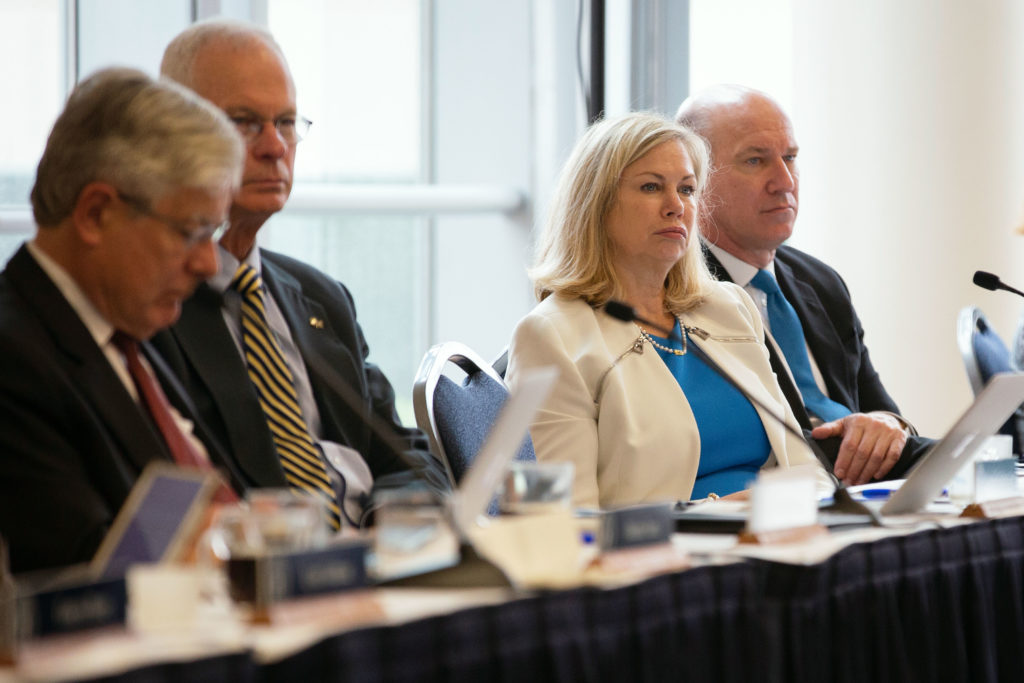On the heels of the conclusion of the University’s campaign to raise $1 billion, officials raised nearly $116 million last fiscal year – the fifth-highest amount in the University’s history.
Donna Arbide, the vice president for development and alumni relations, said GW raised $115.7 million last fiscal year from more than 22,000 donors. Fundraising experts said the high total after a major fundraising drive is likely the product of strong donor relationships forged during the campaign.
Arbide said fundraising efforts did not cease with the end of the $1 billion campaign, and several donors who gave for the first time during the campaign have since continued to give.
She said of the 22,000 donors, 5,000 were alumni, parents or “friends” of the University.
Large gifts from donors last year included an $18 million donation from Atlantic Philanthropies, an organization that donates to health and social public policy causes internationally, to the Milken Institute School of Public Health to support a fellowship program. Another popular donation area was the University’s Power and Promise student scholarship fund, which received nearly $13 million last year, she said.
She said 50 percent of the Class of 2018 also gave back to the University, with a record 16 percent making recurring gifts.
“We are incredibly grateful to the students, alumni, families, faculty, staff, institutional partners and friends of GW who helped us to surpass our annual fundraising goal,” she said in an email.
She added that the University’s development office continues to strategize to ensure it is meeting University President Thomas LeBlanc’s strategic initiative to improve philanthropy, which he announced in the spring.
She declined to say what strategies or events contributed to last year’s fundraising success. She also declined to say how much money each school fundraised in fiscal year 2018.
At a Faculty Senate meeting earlier this month, LeBlanc said raising the $116 million was possible despite staff turnover in the development office and having an interim chief development officer for the last year of the campaign.
During the campaign’s term from 2014 to 2017, three different vice presidents for development and alumni relations led fundraising efforts. Mike Morsberger left GW during the first year of the campaign, and his replacement, Aristide Collins, left the office in 2017 to take over as head of LeBlanc’s presidential transition team. Arbide officially took the reins at the development office in March.
LeBlanc said marking a good fundraising year despite the turnover makes him “optimistic” about the future of philanthropy.
“It’s not a matter of luck. It’s a matter of blocking and tackling,” LeBlanc said. “It’s a matter of getting out and meeting your donors and showing them respect.”
Fundraising experts said hitting nearly $116 million last year is laudable because turnover in development offices typically makes it less likely for donors to give back to universities because they don’t form personal relationships with staffers.
Anne Gore, the senior development officer of annual giving for the community and technical college at the University of Alaska, said turnover can be especially difficult for offices to handle because donors have to get to know new people in the office and develop trusting relationships with them, she said.
She said fundraising depends on successful relationships, which officials likely achieved during the $1 billion campaign.
“Giving can be kind of an emotional thing, it’s a feel-good thing,” Gore said. “They want to make a difference.”
Tim Seiler, a clinical professor of philanthropic studies at Indiana University, said that in some cases, it can be easy to build fundraising efforts after a big campaign by highlighting the success of the campaign and showing its impact. Large gifts are generally what help reach fundraising goals, and development staff can focus on working with the donors who give these kinds of gifts, he said.
The public health school received a total of $80 million from Michael Milken and Summer Redstone in 2014 – the largest donation to the $1 billion campaign and in the University’s history. The University renamed Ivory Tower to Shenkman Hall in 2014 after receiving a $5 million gift from Mark Shenkman.
“People want to be on the winning team,” he said. “It’s a sense of belonging – ‘I’m part of this group of people now.’”
But it’s impossible for staff to reach every alumnus and potential donor in one big campaign, said Brian Gower, the vice president of research at Ruffalo Noel Levitz, a fundraising consulting company for universities that GW has used in the past. He said between new donors and those who have been inspired by the campaign to give back, GW should be able to increase potential donations.
“There’s a lot of evidence here to say that GW has done such a great job with the campaign that they’ll see increases in the coming years,” he said.
Dani Grace contributed reporting.





